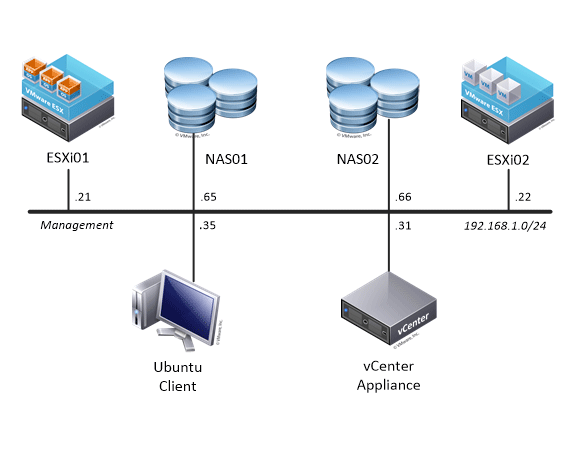This quick reference page provides a summary of the specifications of the EMC CIS Series 1 Pod. The EMC CIS Series 1 Pod was designed to support the EMC Cloud Infrastructure and Services (CIS) Series 1 labs.
The EMC CIS Series 1 Pod is a 100% virtual machine pod consisting of six virtual machines. Linked together through virtual networking, these five virtual machines provide the environment for a student or team to perform the EMC CIS labs.
| Topology | Supports... | Documentation |
|---|---|---|
|
EMC CIS Series 1 Pod |
You may request virtual machine templates for the EMC CIS Series 1 Pod from CSSIA.

The EMC CIS Series 1 course will consume 51 GB of storage per each master pod instance.
Details of the storage requirements for each of the lab virtual machines in the CIS Series 1 Pod are provided in the table below. Some fluctuation in the numbers may occur.
| Lab Virtual Machines | Role | Initial Master Pod |
|---|---|---|
| Ubuntu | Ubuntu client | 10.5GB |
| ESXi01 | Virtualized ESXi server. | 1.0GB |
| ESXi02 | Virtualized ESXi server. | 1.0GB |
| NAS01 | Datastore | 15.0GB |
| NAS02 | Datastore | 15.0GB |
| vCenter Appliance | A virtual Microsoft Windows Server that runs an instance of VMware vCenter server. | 8.5GB |
| Total Recommended | 51.0GB |
The virtual machines are made available as Open Virtualization Format (OVF) or Open Virtualization Archive (OVA) files. These files are available for download from EPNC (Education Pathway National Center).
To request access to the preconfigured virtual machine templates from EPNC: